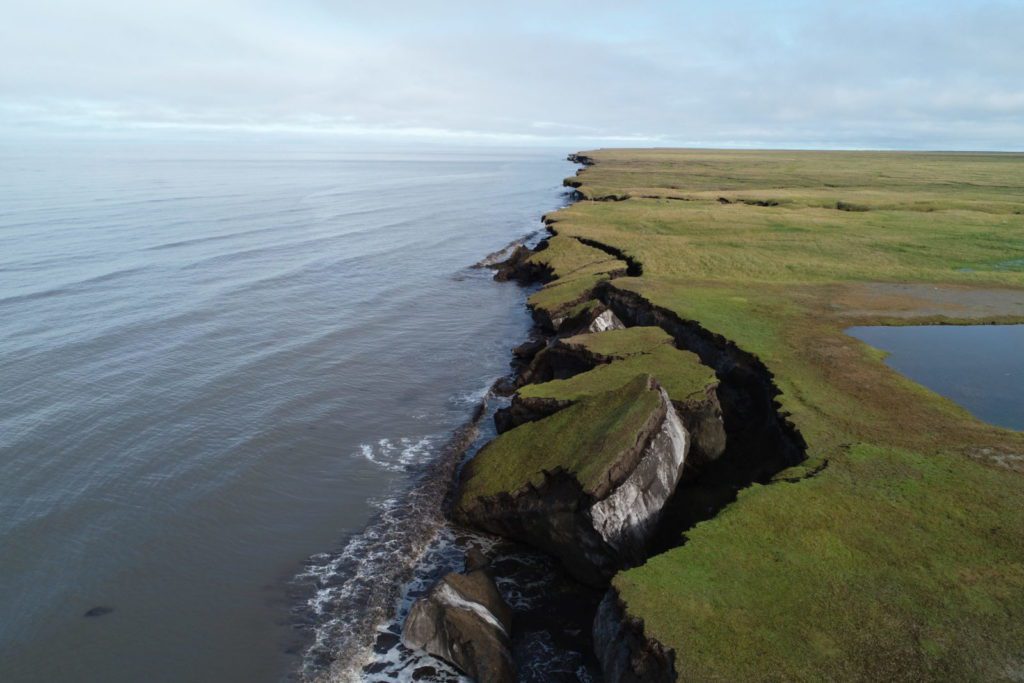Forecasting Coastal Erosion: Integral Develops Tools to Predict Coastal Hazards
Accurate forecasting of erosion along Arctic coastlines is crucial for preparing adaptation strategies for nearby communities and infrastructure. Along with teaming partners, Integral scientists have developed an oceanographic modeling system to aid in the prediction of Arctic coastal erosion. Chris Flanary, Ph.D., will deliver a poster presentation and discuss these tools at the American Shore and Beach Preservation Association (ASBPA) 2019 National Coastal Conference: Where Coasts and Rivers Meet, held on October 22–25, 2019, in Myrtle Beach, South Carolina.

(Image courtesy of Ben Jones, University of Alaska Fairbanks)
Titled “Arctic Coastal Erosion: Coupled Modeling System for Coastal Hazards Evaluation,” and coauthored with Craig Jones, Ph.D., and Sam McWilliams, E.I.T., Dr. Flanary’s presentation displays methodology and results from a system designed to evaluate coastal erosion in Drew Point, Alaska.
Coastline erosion in Drew Point can exceed 10 meters per year and it is expected to increase. Integral worked with Sandia National Laboratories, the U.S. Geological Survey, University of Alaska Fairbanks, and University of Texas at Austin to evaluate coastal erosion through a modeling system that simulated nearshore and permafrost bluff conditions in Drew Point. These innovative tools can be applied to the assessment of coastal hazards worldwide in an effort to protect communities and infrastructure.
For more information, contact Dr. Flanary at cflanary@integral-corp.com.

